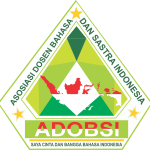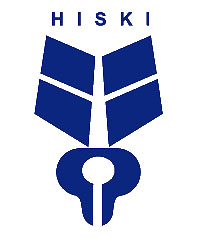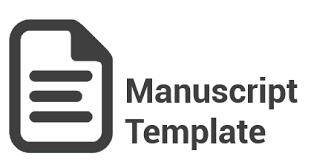Diffusion of Linguistic Functions in the Synonymy of "Demikian" and "Begitu" in 160-Year Literary Work
DOI:
https://doi.org/10.21009/AKSIS.080102Keywords:
demonstrative words, linguistic diffusion, Indonesian linguistics, linguistic functions, synonymyAbstract
This study explores the language change that occurred in two Indonesian demonstrative words, “demikian” and “begitu”, which are synonyms. As synonyms, both have similar linguistic functions. This study examines the possibility of language change influenced by synonymy through the diffusion of their linguistic functions. The literature works used in this study are Hikayat Abdullah (1842), Azab dan Sengsara (1920), and Cantik Itu Luka (2002), covering a period of 160 years. The words ‘demikian’ and ‘begitu’ were collected by using AntConc and were classified based on the level of change that occurred. The diffusion of their linguistic functions is then supported by quantitative data in the form of frequency. The analysis found that the changes in the word ‘demikian’ are influenced by its synonym: the word ‘begitu’. Consequently, in the 21st century, the word ‘demikian’ has become similar to its synonym. This study may be useful to portray how language change occurs in synonyms as a specific linguistic category. It can also point out the direction of language change which can be useful for further discussion on language policy.
References
Alwasilah, A. C. (2013). Policy on Foreign Language Education in Indonesia. International Journal of Education, 7(1), 1–19. https://doi.org/10.17509/ije.v7i1.5302
Alwi, H., Dardjowidjojo, S., Lapoliwa, H., & Moeliono, A. M. (2003). Tata Bahasa Baku Bahasa Indonesia (3rd ed.). Balai Pustaka.
Aronoff, M., & Fudeman, K. (2005). What is Morphology? (1st ed.). Blackwell Publisher Ltd.
Chaer, A. (2012). Linguistik Umum (4th ed.). Rineka Cipta.
Ethnologue. (2017). Indonesia. https://www.ethnologue.com/country/id
Fanego, T. (2004). On reanalysis and actualization in syntactic change. Diachronica, 21(1), 5–55. https://doi.org/10.1075/dia.21.1.03fan
Fonteyn, L., & Petré, P. (2022). On the probability and direction of morphosyntactic lifespan change. Language Variation and Change, 34(1), 79–105. https://doi.org/10.1017/S0954394522000011
Harya, T. D. (2016). Language Change and Development: Historical Linguistics. Premise Journal:ISSN Online: 2442-482x, ISSN Printed: 2089-3345, 5(1), 103–117. https://doi.org/10.24127/pj.v5i1.418
Kodner, J. (2020). Modeling Language Change in the St. Louis Corridor. Language Variation and Change, 32(1), 77–106. https://doi.org/10.1017/S0954394519000255
Kridalaksana, H. (1999). Tatawacana Deskriptif Bahasa Indonesia. Fakultas Sastra Universitas Indonesia.
Kurniawan, E. (2002). Cantik Itu Luka. Gramedia Pustaka Utama.
Labov, W. (1990). The intersection of sex and social class in the course of linguistic change. Language Variation and Change, 2(2), 205–254. https://doi.org/10.1017/S0954394500000338
Levin, B., & Rappaport Hovav, M. (2005). Argument Realization. Cambridge University Press. https://doi.org/10.1017/CBO9780511610479
MacKenzie, L. (2019). Perturbing the community grammar: Individual differences and community-level constraints on sociolinguistic variation. Glossa: A Journal of General Linguistics, 4(1). https://doi.org/10.5334/gjgl.622
Mustakim. (2015). Seri Penyuluhan Bahasa Indonesia: Bentuk dan Pilihan Kata. Badan Pengembangan dan Pembinaan Bahasa Kementerian Pendidikan dan Kebudayaan.
Nevalainen, T., Raumolin-Brunberg, H., & Mannila, H. (2011). The diffusion of language change in real time: Progressive and conservative individuals and the time depth of change. Language Variation and Change, 23(1), 1–43. https://doi.org/10.1017/S0954394510000207
Oktaviani, R., & Chan, S. M. (2023). Development of Short Story Writing with Religious Values through Problem-Based Learning. Aksis : Jurnal Pendidikan Bahasa Dan Sastra Indonesia, 7(2), 161–172. https://doi.org/10.21009/aksis.070205
Ramlan, M. (1987). Morfologi: Suatu Tinjauan Deskriptif. C.V. Karyono.
Ravin, Y. (1990). Lexical semantics without thematic roles. Oxford University Press.
Rutten, G., & Wal, M. van der. (2014). 7. Social and constructional diffusion: Relative clauses in seventeenth- and eighteenth-century Dutch. In Extending the Scope of Construction Grammar (pp. 181–206). De Gruyter. https://doi.org/10.1515/9783110366273.181
Sasangka, S. S. T. W. (2015). Seri Penyuluhan Bahasa Indonesia: Kalimat. Badan Pengembangan dan Pembinaan Bahasa Kementerian Pendidikan dan Kebudayaan.
Schnell, S., & Barth, D. (2018). Discourse motivations for pronominal and zero objects across registers in Vera’a. Language Variation and Change, 30(1), 51–81. https://doi.org/10.1017/S0954394518000054
Seiler, G. (2006). The role of functional factors in language change (pp. 163–182). https://doi.org/10.1075/cilt.279.11sei
Siregar, M. (2010). Azab dan Sengsara (3rd ed.). Balai Pustaka.
Sneddon, J. (2003). The Indonesian Language: Its history and role model in modern society. University of New South Wales Press.
Sweeney, A. (Ed.). (2006). Karya Lengkap Abdullah bin Abdul Kadir Munsyi. Jilid 3: Hikayat Abdullah. mcp.anu.edu.au/N/Abd.H_bib.html
Trask, L. (2009). Why Do Languages Change? Cambridge University Press. https://doi.org/10.1017/CBO9780511841194
Yang, C. D. (2000). Internal and external forces in language change. Language Variation and Change, 12(3), 231–250. https://doi.org/10.1017/S0954394500123014






